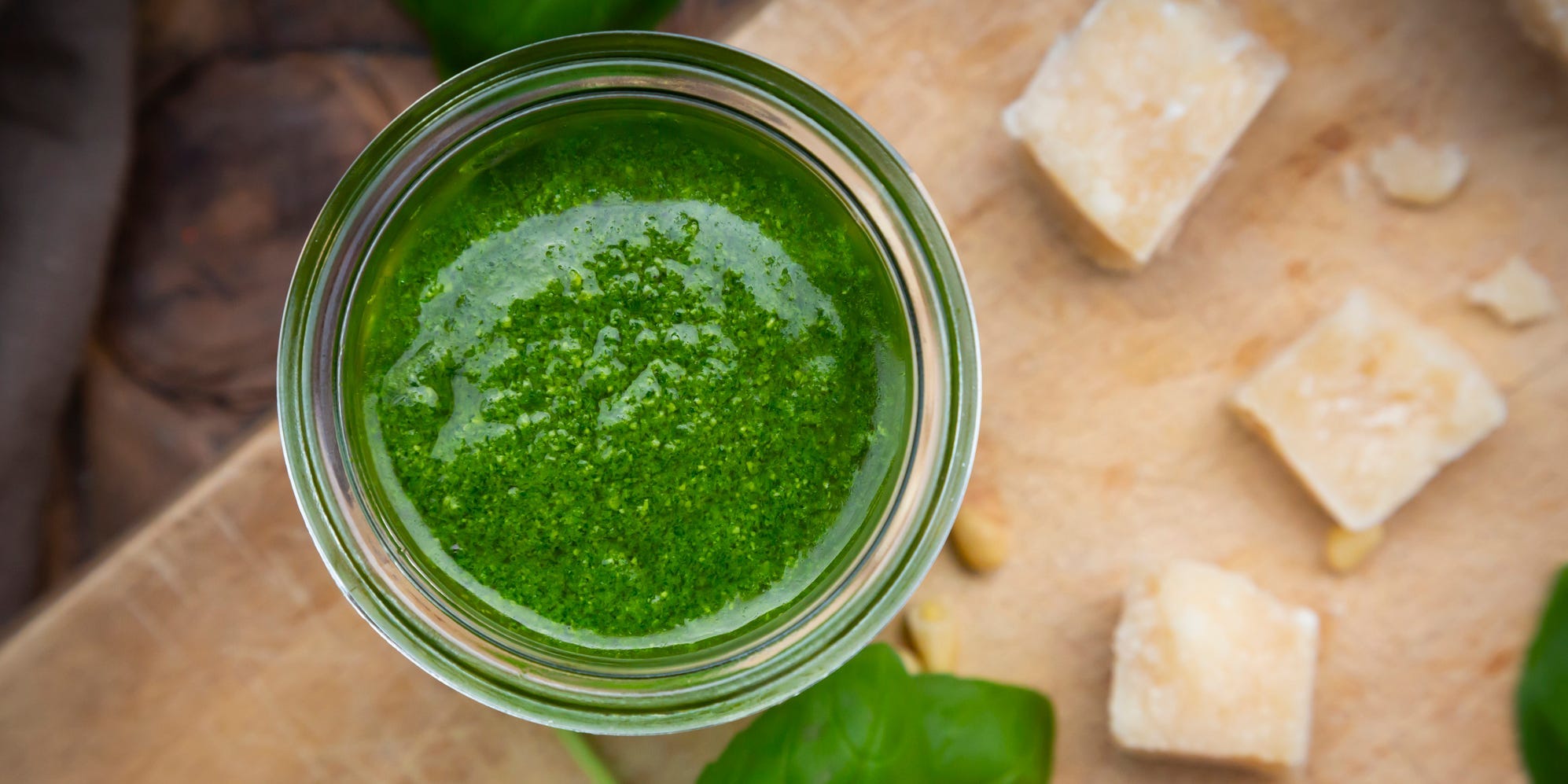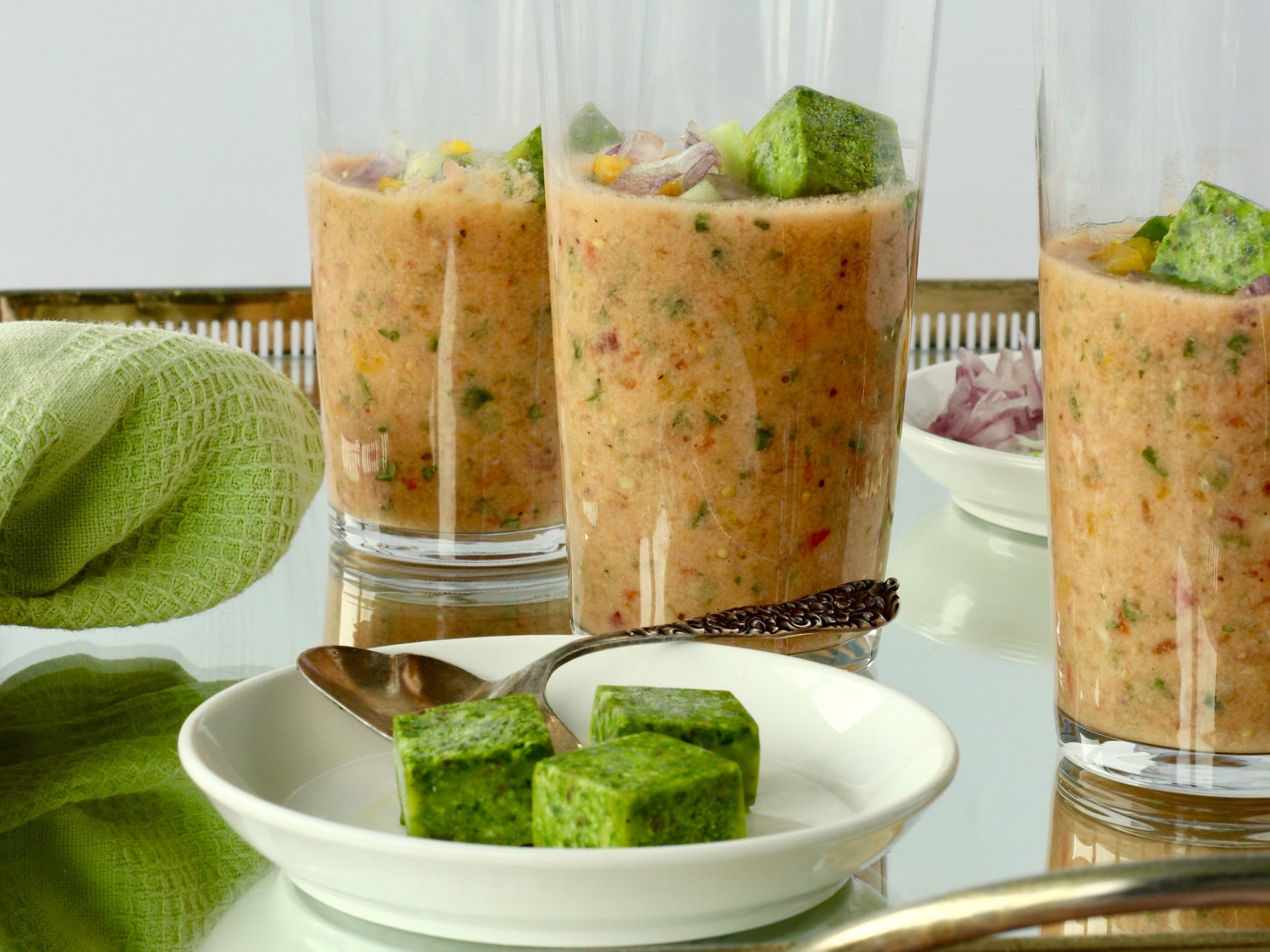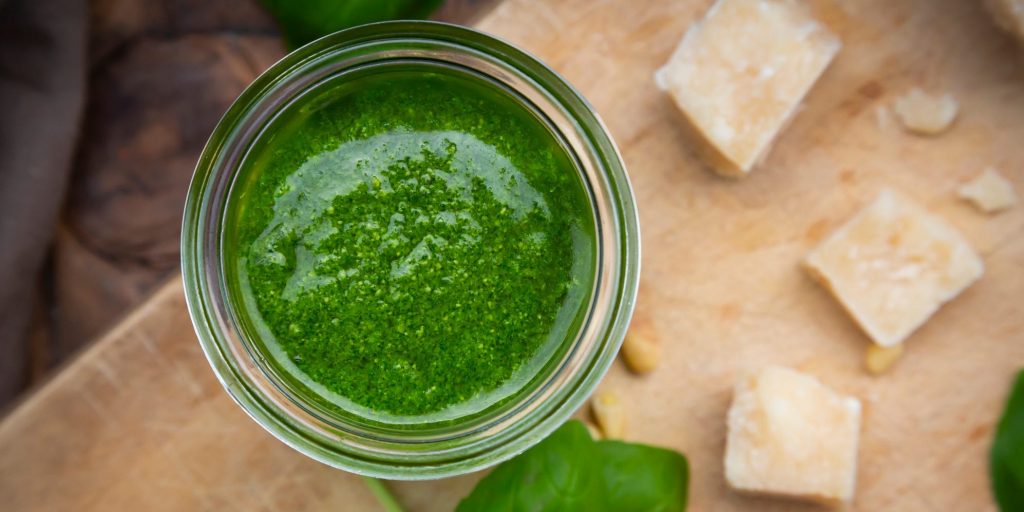
Larissa Veronesi/Getty Images
- Basil pesto is made up of six main ingredients – basil, cheese, nuts, salt and pepper, garlic, and oil.
- You can make pesto using a blender, food processor, mortar and pestle, or with just a knife.
- The ingredients of pesto are easily substitutable; try swapping in a different green or type of nut.
- Visit Insider's Home & Kitchen Reference library for more stories.
One way to elevate any dish – whether it's pasta, a sandwich, or even eggs – is with pesto. Oily, nutty, and tangy all at once, pesto offers a simple way to elevate the flavor of any entree. And it's easy to make at home.
"Pesto is an Italian word that means 'to pound,'" says Leslie Lennox, author of "Pesto: The Modern Mother Sauce" and founder of Hope's Gardens Pesto. "It's a foundation – it's the building blocks to creating a great dish."
While you can try different combinations of herbs, nuts, and cheeses when it comes to your pesto sauce, Lennox says she likes to break down hers into six main components:
- Greens. While basil pesto is likely the most common type you've seen in grocery stores, a variety of herbs and greens are used as the plant base of pesto – arugula, kale, seaweed, spinach, parsley, or even the tops of carrots, radishes, and turnips.
- Garlic. Garlic is a classic building block in pesto, but you can omit it for a low FODMAP sauce.
- Cheese. Lennox notes that Parmigiano-Reggiano is traditionally used for pesto, but can be substituted with standard parmesan, Pecorino Romano, or any other hard to medium-hard cheese.
- Salt and pepper. Add as much or as little as you prefer.
- Nuts. Pine nuts are traditional for pesto, but cashews, walnuts, and peanuts present some other alternatives.
- Olive oil. Olive oil adds body to your sauce and helps emulsify the ingredients. Choose a good, flavorful olive oil that you enjoy.
Tips and tricks for making pesto

Photo courtesy of Leslie Lennox
- Toast your nuts and roast your garlic for some extra flavor. While adding these ingredients raw is perfectly acceptable, Lennox says that toasting your nuts intensifies the flavor by extracting the oil. Roasting your garlic gives it a sweet, mellow taste.
Toast your nuts by placing them in a small dry pan carefully stirring them over low to medium heat until they are golden and fragrant.
To roast your garlic, slice the top off of your garlic bulb, drizzle with a bit of olive oil, salt, and pepper, and then place your garlic in tin foil and roast at 400 degrees Fahrenheit for 30 to 40 minutes.
- Make your pesto vegan-friendly. Luckily, many of the ingredients for pesto are easily interchangeable and adjustable to address dietary restrictions. If you want to make a vegan pesto, substitute your cheese with a vegan cheese, nutritional yeast, or tahini
- Make it nut-free. If you have a nut allergy, use a seed such as sesame, sunflower, pumpkin, or flax seeds.
- Store pesto in a jar. The amount of time your pesto stays good depends on what type of green you use for it, but Lennox says it'll stay at its peak for three to five days. You can store it in a jar with a coating of olive oil inside to slow the oxidation.
- Freeze your pesto. Lennox also recommends freezing by flattening it in a plastic bag or putting it in ice cube trays, that you can then squeeze out and add to soups. Regardless of how you choose to store it, make sure you're putting it in the refrigerator because it can go rancid if left out.
Insider's takeaway
Basil pesto is a simple but flavorful sauce made up of only six ingredients - basil, cheese, nuts, salt and pepper, garlic, and oil - but are easily adjustable if you're vegan or have a nut allergy. It's easy to assemble basil pesto using the items readily available in your kitchen, whether you've got a food processor or just a knife and a bowl, and you can store it in your refrigerator afterward.
